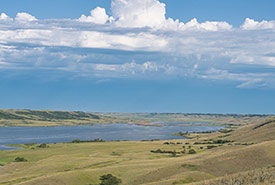NCC: Land Lines – Take Pride in nature

Pride flag (Photo by Markus Spiske via Pexels)
Happy Pride month! No doubt that by this point in the month you’ve gotten used to seeing rainbows everywhere. On flags, crosswalks, corporate logos and so much more, maybe even painted on faces at your local Pride parade! The rainbow flag is now a widely recognized symbol of the 2SLGBTQ+ community, but what do all those beautiful colours mean?
I thought it would be fun to not only share some history of the Pride flag but also highlight some different species that correspond with each colour!
But first, a little history lesson. The first Pride flag was designed by Gilbert Baker in 1978 after being challenged by influential politician Harvey Milk, and filmmaker Arthur J. Bressan Jr. to create a new symbol to represent the gay community. Gilbert’s original design featured eight colours: hot pink, red, orange, yellow, green, turquoise, indigo and violet. Over time, the flag has been modified to be the six-coloured version that we see today.
Red – Life
Northern giant Pacific octopus
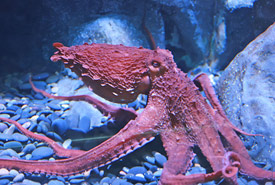
Northern giant Pacific octopus (Photo by Karen/Wikimedia Commons)
What better species to represent the red of the Pride rainbow! Red was chosen for the Pride flag to symbolize life. And the northern giant Pacific octopus is the longest-lived species of octopus, typically living to be three to five years old.
This species can be found in northern Pacific waters in naturally occurring caves within intertidal zones and in waters up to 100 metres deep.
Orange – Healing
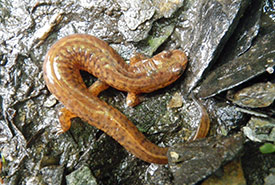
Spring salamander (photo credit: NCC)
A threatened species, spring salamander is a lungless, nocturnal salamander, orange in colour and can grow up to 20 centimetres long. Spring salamanders are named not for the season but after the habitat where they are often found; in cool spring-fed streams.
Yellow – Sunlight
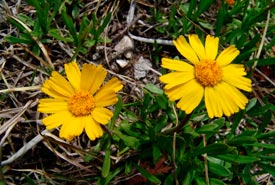
Lakeside daisy (Photo by Charles Peirce)
As its name suggests, this globally rare, sunny yellow flower is only found along the Great Lakes, in alvar habitats. Alvars are areas with a thin to no soil layer over limestone or dolostone bedrock.
Green – Nature
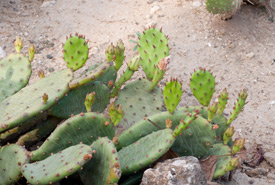
Eastern prickly pear cactus (Photo by Pany Goff/Wikimedia Commons)
Endangered in Canada, this prickly succulent is found only to be naturally occurring in two locations in Ontario: cedar savannah habitats in Point Pelee National Park and Fish Point Provincial Nature Reserve on Pelee Island.
Blue – Serenity
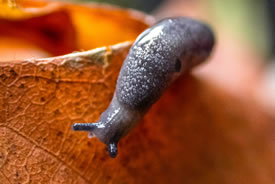
Blue-grey taildropper (Photo courtesy of Habitat Acquisition Trust)
Blue-grey in colour, this small slug is named for its unique ability to drop off its tail leaving predators with the still wriggling appendage and allowing the slug to escape. This threatened species is known to exist in only about 10 Canadian locations, all of which are on Vancouver Island. Slow moving and tiny creatures, blue-grey slugs rely on the serenity of protected forests like the Nature Conservancy of Canada’s Chase Woods Property.
Purple – Spirit
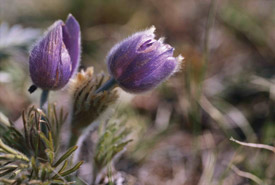
Prairie crocus (Photo by Karol Dabbs)
The official flower of Manitoba, purple prairie crocus has a misleading name. Spotting these flowers is sure to lift your sprits after a long winter since they are usually one of the first signs of spring on the Prairies, this “crocus” is actually an anemone from the buttercup family! This slow growing but resilient flower is a favourite among gardeners for its beauty and hardiness. These flowers embody the spirit of spring.



